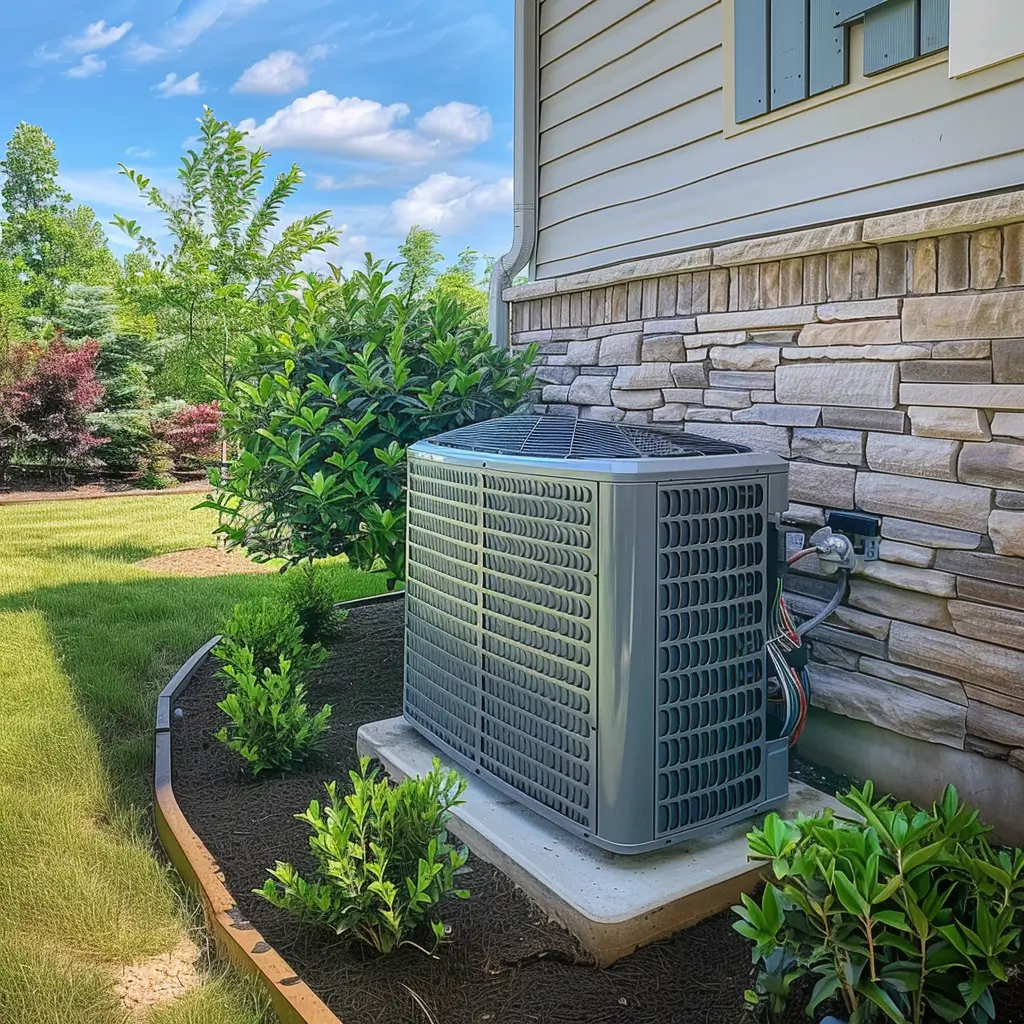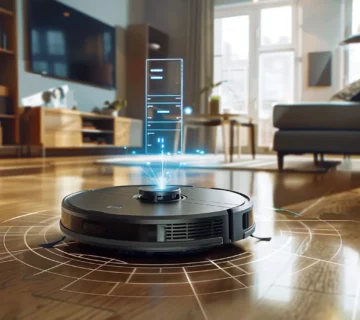In today’s world, where comfort and convenience are paramount, the role of outdoor AC unit cannot be understated. These systems relieve scorching temperatures and significantly maintain a healthy and comfortable indoor environment. This comprehensive guide will delve into every aspect of outdoor AC units, from installation and maintenance to energy efficiency and future innovations.
Introduction to Outdoor AC Units
Importance of AC Units
Air conditioning units have transformed how we experience comfort in our homes and workplaces. They play a crucial role in regulating indoor temperatures, ensuring that spaces remain relaxed and comfortable even during the year’s hottest days. Beyond comfort, air conditioners also help maintain indoor air quality by filtering out pollutants and allergens essential for health and well-being.
Evolution of Air Conditioning
The journey of air conditioning technology has been remarkable. From the early days of rudimentary cooling systems to the sophisticated, energy-efficient units we have today, the evolution has been driven by the need for better performance and sustainability. Modern air conditioners are designed to be more efficient, environmentally friendly, and easier to maintain, reflecting advancements in technology and engineering.
Critical Components of an AC System
Understanding the components of an air conditioning system is fundamental to grasping how these units work. An AC system typically comprises an evaporator coil, a condenser coil, a compressor, and a refrigerant. The outdoor AC unit houses the condenser coil and the compressor, which work together to release heat from the indoor space to the outside, thus cooling the interior environment.
Understanding the Outdoor AC Unit
Primary Functions
The outdoor AC unit is a critical component of the air conditioning system. Its primary function is dissipating the heat absorbed from the indoor air to the outside environment. The condenser coil and the compressor facilitate this process, compressing the refrigerant and releasing heat.
How it Differs from Indoor Units
While indoor and outdoor units are essential to an air conditioning system’s functioning, they serve different purposes. The indoor unit absorbs heat from the indoor air, while the outdoor unit releases this heat outside. This separation of functions helps maintain a consistent and comfortable indoor temperature.
Common Types of Outdoor AC Units
Outdoor AC units come in various types, each suited for different applications and environments. The most common types include split-system units, packaged units, and ductless mini-split systems. Each type has its advantages and is chosen based on factors such as the size of the space, energy efficiency requirements, and budget constraints.
Installation of Outdoor AC Units
Choosing the Right Location
The location of the outdoor AC unit is critical for its performance and longevity. It should be placed in a shaded area to prevent overheating and away from obstructions that could impede airflow. Proper placement ensures that the unit operates efficiently and minimizes the risk of damage.
Professional vs. DIY Installation
Installing an outdoor AC unit can be a complex task requiring professional expertise. While DIY installation might seem cost-effective, it can lead to issues if not done correctly. Professional installation ensures that the unit is set up according to manufacturer specifications and local regulations, reducing the risk of future problems.
Installation Costs and Considerations
The cost of installing an outdoor AC unit varies depending on factors such as the unit type, location, and complexity of the installation. It is essential to consider these costs upfront and budget accordingly. Additionally, investing in a high-quality unit and professional installation can save money in the long run by reducing maintenance and repair expenses.
Maintenance Tips for Outdoor AC Units
Regular Cleaning Practices
Maintaining the cleanliness of the outdoor AC unit is crucial for its efficient operation. Regularly cleaning the coils and removing debris from the unit helps maintain optimal airflow and prevents overheating. This practice not only enhances performance but also extends the lifespan of the unit.
Seasonal Maintenance Tips
Seasonal maintenance prepares the outdoor AC unit for varying weather conditions. Before summer, it is essential to check the refrigerant levels, inspect the electrical components, and ensure the unit functions correctly. Similarly, preparing the unit for winter involves covering it to protect it against snow and debris.
Common Problems and Solutions
Outdoor AC units can encounter refrigerant leaks, electrical failures, and mechanical wear and tear. Identifying and addressing these problems promptly can prevent more significant issues and costly repairs. Regular maintenance checks and timely professional intervention are crucial to keeping the unit in good working condition.
Improving Energy Efficiency
Choosing Energy-Efficient Models
Investing in energy-efficient outdoor AC units benefits the environment and your wallet. These units are designed to consume less electricity while providing the same level of cooling, leading to lower energy bills. Look for units with high SEER (Seasonal Energy Efficiency Ratio) ratings for optimal efficiency.
Proper Insulation and Sealing
Proper insulation and sealing of your home play a significant role in the efficiency of your air conditioning system. Insulating your home reduces the heat entering the space, allowing the AC unit to work less and consume less energy. Additionally, sealing gaps and leaks in windows and doors helps maintain a consistent indoor temperature.
Smart Thermostats and Energy Management
Integrating smart thermostats with your outdoor AC unit can significantly enhance energy management. Smart thermostats allow you to control the temperature remotely and set schedules, ensuring that the AC unit operates only when needed. This not only improves comfort but also reduces energy consumption and costs.
Troubleshooting and Repairs
Identifying Common Issues
Identifying common issues with your outdoor AC unit can save time and money on repairs. Common problems include unusual noises, reduced cooling efficiency, and increased energy consumption. Recognizing these signs early allows you to address the issues before they escalate into more significant problems.
When to Call a Professional
While some minor issues can be addressed through DIY methods, there are times when professional intervention is necessary. If you notice persistent problems with your outdoor AC unit, such as frequent breakdowns or significant performance drops, it is advisable to call a professional technician. They have the expertise and tools to diagnose and fix complex issues.
Repair Costs and Budgeting
Repair costs for outdoor AC units can vary widely depending on the nature and severity of the problem. Budgeting for potential repairs and investing in a maintenance plan covering regular inspections and minor repairs is essential. This proactive approach can help avoid unexpected expenses and prolong the unit’s life.
Benefits of Outdoor AC Units
Enhanced Comfort
An outdoor AC unit’s primary benefit is its enhanced comfort. Maintaining a consistent indoor temperature creates a pleasant living environment free from the discomfort of extreme heat. This is particularly important during the hot summer when indoor conditions can become unbearable without proper cooling.
Health Benefits
Air conditioning units also contribute to better health by improving indoor air quality. They filter out dust, pollen, and other allergens, reducing the risk of respiratory issues and allergies. Additionally, by controlling humidity levels, they prevent the growth of mold and mildew, creating a healthier living environment.
Property Value and Aesthetics
Installing an outdoor AC unit can enhance the value of your property. Potential buyers often look for homes with efficient cooling systems, and a well-maintained AC unit can be a significant selling point. Additionally, modern outdoor units are designed to be aesthetically pleasing, blending seamlessly with the exterior of your home.
Environmental Considerations
Eco-Friendly Refrigerants
Modern outdoor AC units use eco-friendly refrigerants with less environmental impact than older models. These refrigerants are designed to be more efficient and reduce greenhouse gas emissions, contributing to a more sustainable and eco-friendly cooling solution.
Reducing Carbon Footprint
You can significantly reduce your carbon footprint by choosing energy-efficient outdoor AC units and integrating them with intelligent energy management systems. Efficient units consume less electricity, lowering greenhouse gas emissions from power plants. This is a crucial step towards achieving a more sustainable lifestyle.
Recycling and Disposal
Proper recycling and disposal of old outdoor AC units are essential to minimize environmental impact. Many components of these units, such as metals and refrigerants, can be recycled. It is important to follow local regulations and guidelines for disposing of old units to ensure that they are handled in an environmentally responsible manner.
Innovations in Outdoor AC Units
Latest Technological Advances
The field of air conditioning technology is constantly evolving, with innovations aimed at improving efficiency and performance. Recent advances include variable-speed compressors, which adjust the cooling capacity based on the current demand, and advanced filtration systems that enhance indoor air quality.
Smart Home Integration
Integrating outdoor AC units with smart home systems offers enhanced control and convenience. Smart home integration allows you to monitor and control your AC unit remotely, receive maintenance alerts, and optimize energy usage. This level of control not only improves comfort but also contributes to energy savings.
Future Trends in Air Conditioning
The future of air conditioning looks promising, with trends focusing on sustainability and efficiency. Innovations such as solar-powered AC units, advanced heat exchangers, and improved refrigerant technologies are expected to drive the industry forward. These trends reflect a growing emphasis on reducing environmental impact while maintaining high performance.
Cost Analysis and Budgeting
Initial Purchase Costs
The initial cost of purchasing an outdoor AC unit can vary significantly based on brand, capacity, and features. Researching and comparing different models is essential to find one that fits your budget and meets your cooling needs. Investing in a high-quality unit may involve higher upfront costs but can lead to long-term savings.
Long-term Operational Costs
Long-term operational costs are an essential consideration when choosing an outdoor AC unit. Energy-efficient models typically have lower operating costs, resulting in savings on electricity bills over time. Regular maintenance and timely repairs can minimize operational expenses and extend the unit’s lifespan.
Financing and Incentives
Various financing options and incentives are available to help offset the costs of purchasing and installing an outdoor AC unit. These include manufacturer rebates, energy efficiency tax credits, and utility company incentives. Exploring these options can make the investment more affordable and financially viable.
Selecting the Best Outdoor AC Unit for You
Factors to Consider
Choosing the best outdoor AC unit involves considering several factors, such as the size of the space, energy efficiency, budget, and specific cooling needs. It is essential to assess these factors carefully to ensure that your chosen unit provides optimal performance and meets your requirements.
Comparing Top Brands
Comparing top brands can help in making an informed decision. Leading brands such as Carrier, Trane, and Lennox offer a range of outdoor AC units with varying features and capacities. Reading reviews and testimonials can provide insights into the reliability and performance of different models, aiding in the selection process.
Conclusion
In conclusion, outdoor AC units enhance comfort and maintain a healthy indoor environment. By understanding the different aspects of these units, from installation and maintenance to energy efficiency and innovations, you can make informed decisions that ensure optimal performance and longevity. Investing in a high-quality, energy-efficient outdoor AC unit provides immediate comfort and air quality benefits and contributes to long-term savings and environmental sustainability.



